To reproduce pictures found in Bristol Central Reference Library please contact them by emailing refandinfo@bristol.gov.uk.
The Demerara
The Demerara was the second largest steamer afloat, only the Great Britain was bigger. She was launched in Bristol on 27th September 1851 and wrecked on 10th November on her way to have engines fitted. The damage was considered to be too great for the ship to continue as a steamer and the Demerara was converted to sail and renamed the British Empire.
On November 10th, 1851, the Demerara was wrecked in the Avon through careless navigation. She was a new paddle steamer just turned out of the hands of Mr. William Patterson, in whose yard the Great Western had been built. The Demerara was the largest ship, save the Great Britain, that up to that time had left stocks, her registered tonnage being about three thousand. She had been built to the order of the West India Mail Steamship Company, and was launched on September 27th. On the day of the disaster she left Cumberland Basin in tow of a Glasgow tug to go to the Clyde to be fitted with engines. She was late on the tide, which had begun to ebb. The tug was started at the dangerously high speed of seven or eight miles an hour, in the hope of making up for lost tide.
Mr. Patterson, who was aboard the Demerara, was alarmed, and spoke urgently to the pilot. Speed was then reduced, but not sufficiently, and soon after passing the Round Point the bow of the new boat heavily struck the rocks on the Gloucestershire bank. The strong ebb tide swung the ship across the Avon. The tide left her, and she settled down, rivets starting and the deck twisting. Here was not only damage to the ship, but a blocking of the port as effectual as any that had occurred during the past century or two.
Therefore almost superhuman salvage efforts were made on the next tide, and the ship was eventually removed to the side of the river, in front of Egelstaff’s quarry, so that the navigation was free. This was done ” at night,” says Latimer, ” amidst the blaze of tar barrels and torches, presenting a remarkable spectacle to thousands of persons who had assembled” to watch the proceedings of the large body of workmen engaged.
It was thought to repair the ship where she lay, but unhappily she was not properly secured, and about an hour later she broke from her moorings, and was again carried across the river, where she lay until the morning tide, and suffered more damage. Eventually she was refloated, and was taken back to dock. Exaggerated reports of the damage were widespread. The ship, insured for her full cost (48,000), was abandoned by underwriters as a total wreck, value 15,000. She was, however, repaired, sold on July I3th for 5,600, and again in September, 1859, for 200 less. By that time she had become the British Empire, being converted into a sailing ship. In June, 1858, Mr. Patterson was obliged to consult his creditors, and it was then stated that he had lost 5,900 by the Demerara, in addition to heavy losses on other ships he had built. Mr. Patterson had world-wide fame as the builder of such ships as the Great Western, the Great Britain and Severn (for the Oriental Co.), the Royal Charter and the Demerara itself. He also built the first of the naval steamers, the Dasher ; and many gunboats and mortar-boats. He had a share of the orders for gunboats given out hurriedly by the Government for use in the Crimean War. The Earnest, Escort, Hardy, Havoc, and Highlander were built in Mr. Patterson’s and Messrs. Charles Hill & Sons’ yards at that time. And while some contractors elsewhere turned out rotten boats, those built at Bristol were fully up to specification. Material and labour, however, rose in price, and it was said at the time of his failure that Mr. Patterson had since 1850 lost 21,000 by building gunboats. The total liabilities were 8,498, of which 5,177 were unsecured. The Demerara’s figure-head, ” the left-handed giant,” as it has been called, from the manner in which it is holding its spear, stands on a bracket outside a corner house in Quay Street, and has been preserved there for many years. The making of Colston Avenue in 1895 removed the shipping farther from the figure than it was originally.
A Short History of the Port Of Bristol
by Charles Wells. J. W. Arrowsmith, Bristol, 1909.
The figure head disintegrated when it was moved in the 1930 and was replaced with a much smaller replica.
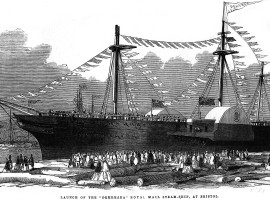
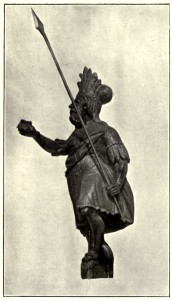
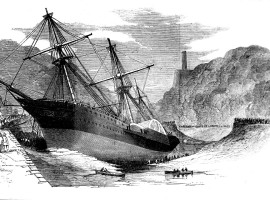
In November 1851, the newly built Demerara was grounded under the watchful eyes of thousands of spectators. In part this mishap was blamed on the pilot who rejected the suggestion of the ship’s captain that ‘he had better slacken the speed’ as the vessel approached a sharp double bend in the river about half-a-mile from the dock-gates. However, the cause of the accident was also attributed to the fact that the design of the tug was not ‘one adapted especially to the navigation of the Avon’, the length of the vessel being nearly twice that of other tugs operating on the river.
From Pirates to Proletarians –
The Experience of the Pilots and Watermen of Crockerne Pill in the Nineteenth Century
by Mike Richardson
The Gipsy
… the schooner “ Gipsy” belonging to the Waterford Steam Navigation Co. was on a voyage from Bristol to Liverpool and Waterford. She was towed down the River Avon by the tug Sea King but shortly after passing under Clifton Suspension Bridge she struck rocks and mud on the Bristol bank. She listed over and blocked the river. Tugs tried to move her but failed. A steam driven fire engine was then brought by barge to pump the water out of her so that the cargo could be removed, but she broke in two. The crew remained on board and removed the cargo as they were in no real danger. The only passenger had left the ship safely shortly after she had gone aground. It was not until 17 May that a channel could be opened sufficiently for ship movements in the river Avon. Eventually some weeks later the remains of the “ Gipsy” were finally dynamited and the river fully reopened.
A Chronology Of Bristol Channel Shipwrecks.
Compiled By Ron Tovey
While Mr. Howard was so engaged there occurred yet another wreck in the river, which revived memories of the Demerara and the Kron Prinz. This was the stranding of the Waterford Steam Navigation Company’s steamer, the Gipsy, which happened on the night tide of Sunday, May 12th, 1878. The boat had arrived in Bristol from Ireland on the 11th with passengers and cattle, and left Cumberland Basin for Waterford with passengers and cargo in the early morning of the 12th. It was then high water. When opposite the gully in the Black Rock, the steamer, which had a tug, struck the bank of the river on the Bristol side. As she could not be moved, the passengers were taken off, and afterwards the crew. As she lay the Gipsy blocked the navigation, her stern being completely under water when the high tide returned. Three tugs failed to change her position, and it soon became evident that exceptional measures would have to be adopted. The Docks Committee was called together on the Monday morning, and instructed the Haven Master (Captain Parsons, R.N.) to take whatever steps were necessary so that ships might get in and out of the City Docks as soon as possible. Some 250 men were immediately set to work to clear the wreck of cargo, furniture and fittings. On the Tuesday a large gang of navvies was put on the Somerset bank to cut away mud, and so deepen the water as to allow the larger vessels to pass the wreck. There was a meeting of the Town Council on the same day. Mr. George Wills stated, for the Docks Committee, that it was proposed to use dynamite among other means to clear the navigation. Lieutenant Durnford, R.N., and half a dozen men of the torpedo service soon arrived upon the scene to apply the dynamite charges. A sergeant and three men of the Royal Engineers were also engaged to assist. Charges of the explosive up to 200 Ib. were used. On the 15th of May several windows of houses were blown in by the force of an explosion, and it was said that the noise was heard a few miles away.
A Bedminster youth, who was watching operations from the farther end of the Gully on Durdham Down, estimated to be a quarter of a mile from the wreck, was struck by a piece of metal after an explosion, and had to be removed to the Royal Infirmary. Steps were then taken to warn spectators and others of impending explosions. The last charge was fired on Tuesday, June 4th, and then very little of the Gipsy remained in the river. Indeed, it was considered that the course had been cleared. Lieutenant Durnford spoke almost regretfully of the fact that an end had come to a period of fine practice for him and his men. Of course, there were large crowds attracted daily to the scene of the disaster for as long as there was anything worth seeing, and brake and cab proprietors made big profits in the first few days. The ship was valued at 15,000.
A Short History of the Port Of Bristol
by Charles Wells. J. W. Arrowsmith, Bristol, 1909.
The Black Eagle
The Black Eagle was a steam tug built in South Shields in 1861, her boiler exploded in 1866 killing her entire crew.
Cardiff tug Black Eagle, on Thursday, November 1st, 1866, resulting in instant death to the captain and six others on board. The tug was taking the Norwegian barque Aucutor down the Avon at high water in the daytime. When the tug was opposite St. Vincent’s Terrace her boiler burst with a terrific noise, the vibration suggesting an earthquake.
Some persons in the Hotwell Road saw large pieces of the boiler rise to a height above that of the floor of the Suspension Bridge, and afterwards a portion of the boiler weighing 4 cwt. was found in Mr. G. Stacey’s garden, Prince’s Buildings, at an altitude of nearly 300 feet above the deck of the tug. The windows of houses in St. Vincent’s Parade were smashed by the explosion. The roof of No. 7 was cut through, and the chimney-stacks were knocked over. This house and No. 8 (Mr. Leonard Bruton’s) suffered most damage. A good deal of injury was also done to the dockmaster’s residence, No. 11, and the wonder was that nobody in or near these houses was hurt. There were some remarkable escapes.
The body of the captain of the Black Eagle (William Woodman) was immediately found on the bank of the river. There was a large wound in his head. The mate (James Livings) and the engineer (George Ledger) were discovered killed on the boat. Four others were blown into the water and drowned, the body of one of the crew (William Huish) being picked up in the river at Sea Mills several days after. The boat was refloated on the third day after the accident. The owner (Mr. Strong, of Cardiff) was at a loss to account for the explosion. The tug was but five and the boiler only three years old. It had been tested to nearly twice the normal pressure upon it. Bristol engineers suggested that the explosion was due to a sudden inrush of water into an almost empty red-hot boiler. In this way steam would have been generated to an amount that no safety-valve could take off. At the coroner’s inquest the Chief Engineer to the Board of Trade (Mr. Galloway) was present, and he favoured the theory that a sudden increase of steam caused the explosion.
A Short History of the Port Of Bristol
by Charles Wells. J. W. Arrowsmith, Bristol, 1909.
One of the most terrific boiler explosions that has been known in Bristol occurred on Friday, Nov. 2, near Rownham, Bristol Hot Wells. A powerful steam tug, called the Black Eagle, belonging to the port of Cardiff, was engaged to tow a barque down the river from the Cumberland Basin, and thence across the Channel to the Bute Docks, Cardiff. The vessel had passed the Rownham Ferry, and had almost passed the commanding row of houses known as St. Vincent’s Parade, when the boiler of the tug suddenly exploded with an amount of violence which not only shattered the vessel to pieces and consigned every soul on board to an instantaneous and violent death, but which shook the block of residences already named to the foundations, and shattered the majority of them in a very extraordinary manner. One fragment of the boiler, after passing over the quay wall without touching it, deposited itself on a gravel walk beneath an avenue of trees which there skirts the river. Others, however, and those, too, of far greater proportions in weight, wore hurled to distances which almost appear incredible. One fragment, which was estimated to weigh a ton, alighted on the residence of Mr. Wilkinson, managing engineer of the Port and Pier Railway Company, a five storey house located at the distance of 100 feet from the spot where the explosion took place. It carried in the roof and occasioned much damage to other parts of the premises. An enormous mass of iron, measuring over 15 feet in length, and estimated to weigh three tons, was hurled high into the air, and after carrying away a large portion of the roof, and sweeping away in its course a part of the chimney stack, was precipitated into the garden at a distance of at least 140 feet in a different line from the part of the river where the catastrophe occurred. The extent to which the houses were shaken may be gathered from the fact that the masonry of a raised terrace in front was to a large extent displaced, whilst the inhabitants state that their residences shook as if from the convulsion caused by an earthquake.
On Tuesday an inquest was held on the bodies of three of the men killed. It was given in evidence that the boiler was neither old nor worn, and that due attention to the instructions for working it would have kept the pressure very much below that which it could bear with safety. The engineer, one of the deceased men, had, however, been detected in putting on extra weight on the valve, and had been threatened with dismissal for so doing. For this and other reasons it appeared probable that the catastrophe was duo to the imprudence of the engineer. Scientific witnesses were of opinion that the water had been allowed to get very low in the boiler, and that consequently the plates became red hot. It is well known that the power of steam is largely increased when the vapour is formed instantaneously from water; and in the present case, as in many others, the pumping in of fresh water into the red-hot boiler was followed by an immediate explosion. Having heard all the evidence, the jury returned a verdict of death from the explosion of a boiler.
The Maitland Mercury Saturday February 2 1867
The Llandaff City
Built for the Bristol City Line by T. Richardson & Son, Hartlepool in 1882. She sailed on the Bristol-New York service and sank but was then salvaged in the River Avon in January 1890. The Llandaff City was eventually Broken up in Genoa in 1922.
The Llandaff City was run into by the steamer Virant in the Avon near Pill on January gth, 1890, and was wrecked. She lay across the river, completely blocking navigation. She was refloated on January i8th. The Virant, which proceeded to sea without interruption, was wrecked on the Spanish coast a few days later. Her owners had to pay Messrs. Charles Hill & Sons 13,000 for damage to the Llandaff City. This was the last notable wreck in the Avon to date. The New York City, built in 1907, is the largest boat of the line, her gross tonnage being 2,970. An important line of Canadian steamers was set up by Messrs. Flynn, Main and Montgomery in 1885. The Lycia, Etolia, Loango, Memnon, Memphis, Merrimac and Merino ran for some years between Avonmouth and Montreal (Portland in winter). Then Messrs. Elder, Dempster & Co.
A Short History of the Port Of Bristol
by Charles Wells. J. W. Arrowsmith, Bristol, 1909.
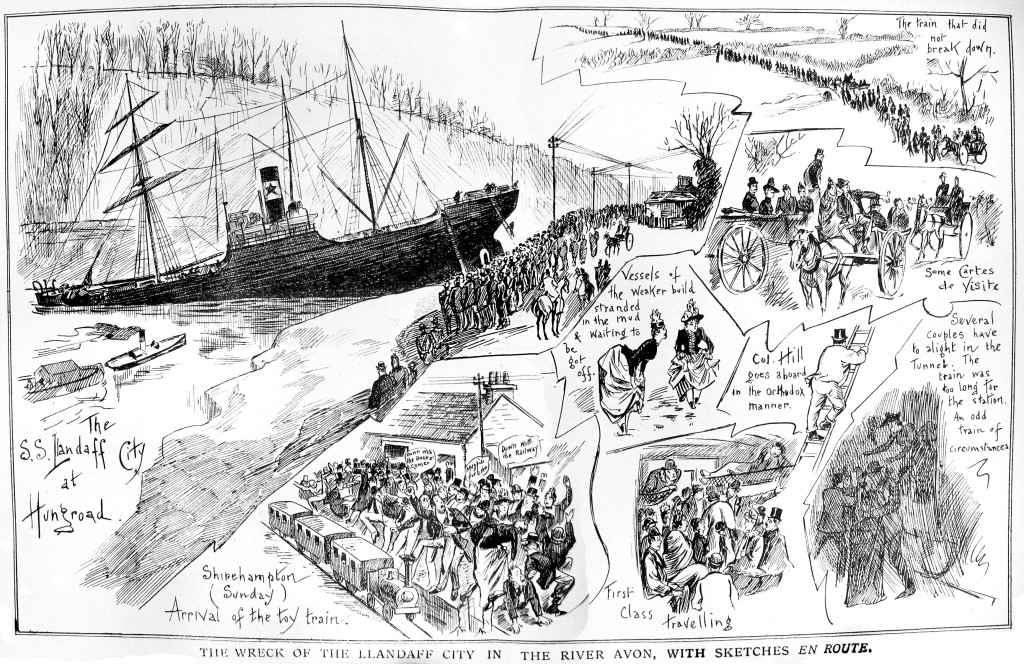
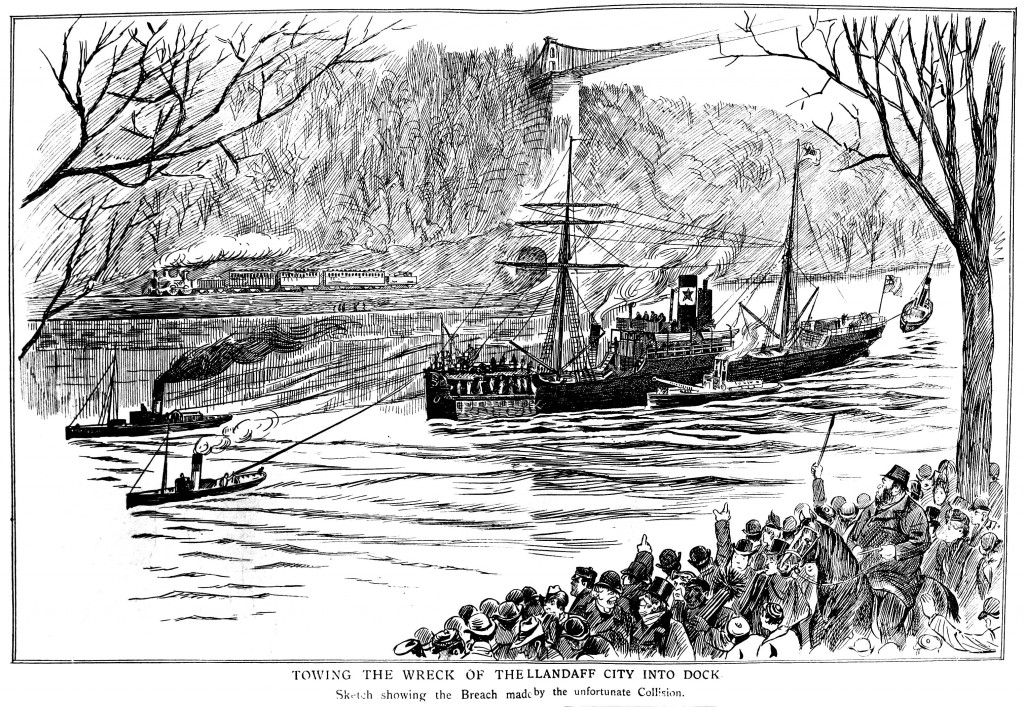
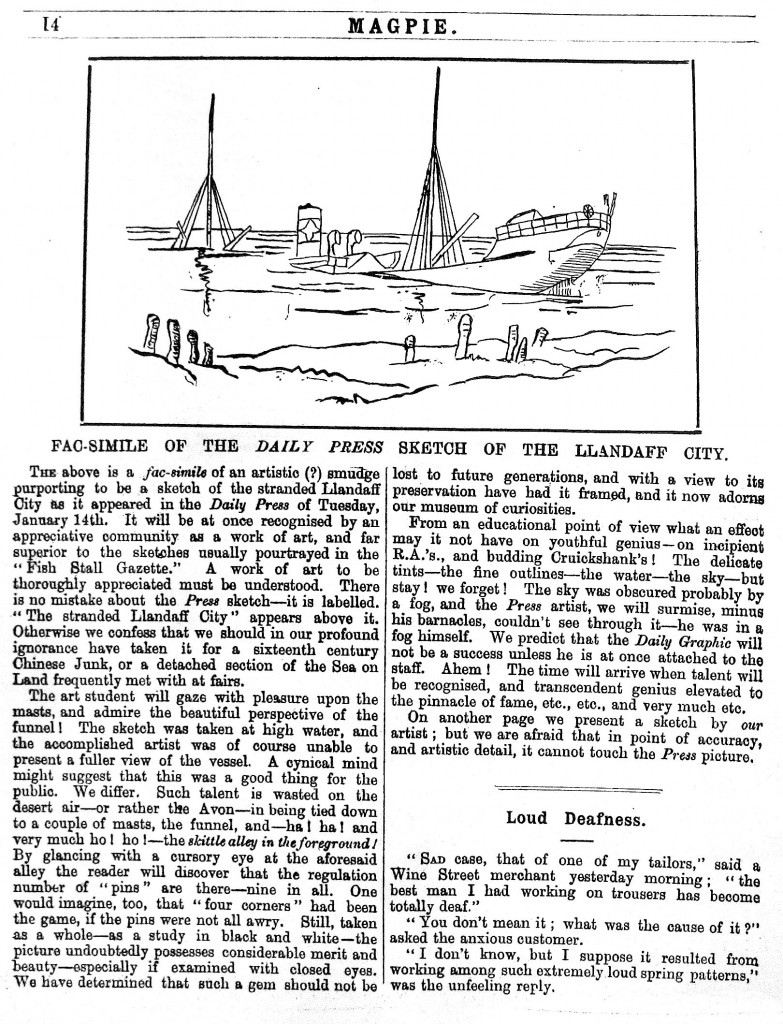
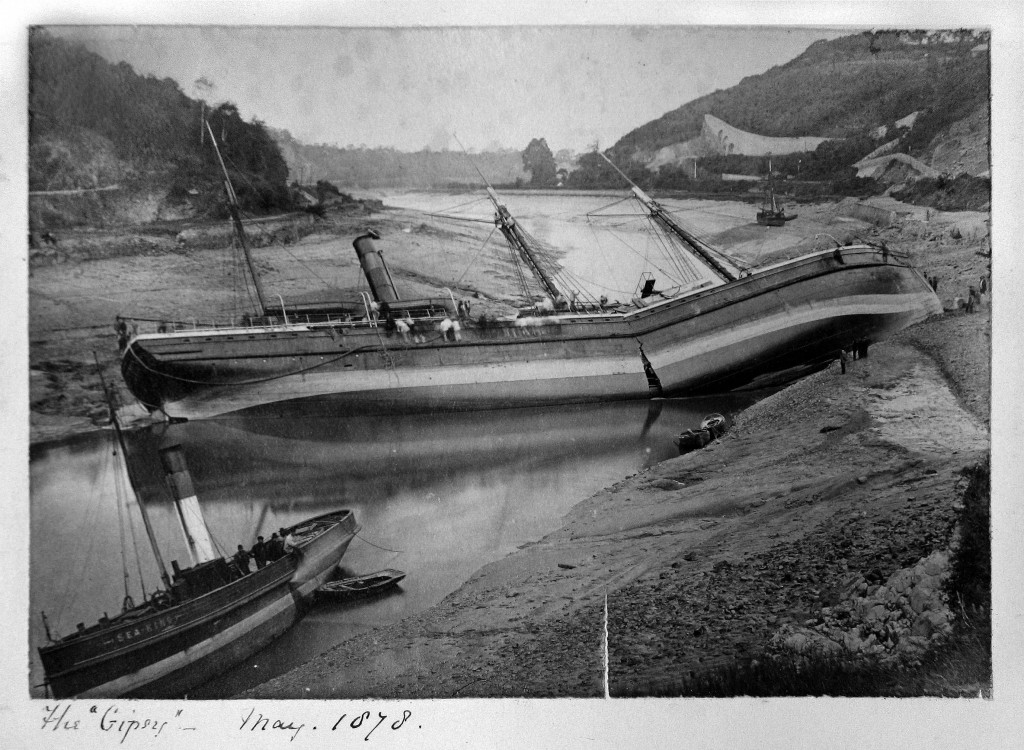
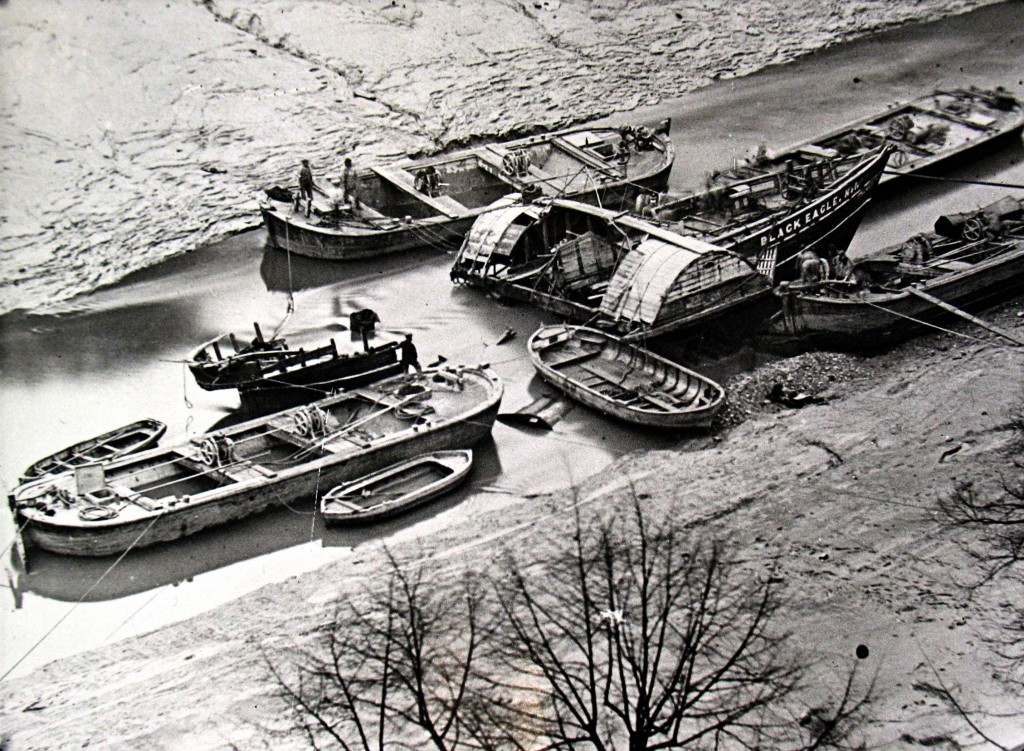
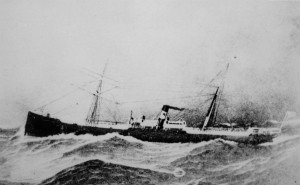
Heather McDonald
I believe my great uncle was the Master on the Llandaff City . His name Alfred Edward Andrews . Is there anywhere I could confirm this
Kind regards
Heather
John Peacock
Very interesting and totally unknown to me here in Bristol.
Ray Williams
i read with interest your article. about the Black Eagle ship and its Captain in William Woodman.
My Grandfather was also Captain William Woodman Captain of the salvage ship Preservor in The WW 2.
He was born around 1870, he was born in Bristol.
Do you know if the Black Eagle Captain had any sons ?
It is such a coincidence.sons in those days followed in the footsteps of their fathers and inherited their father’s name.
Let me know if they are the same family if you can.Thank you so much. Brilliant website. Very interesting. Keep up the good work. The 19th Century was so interesting for Bristol and Bristol Chanel. Ray Williams. High Wycombe.
Randell Brantley
Hello Ray
That is very interesting. Unfortunately I know nothing about William Woodman other than what is here. I was looking at some pictures of wrecks in Bristol Central Reference Library and then found out a little about each one. That is as far as I got.
Good luck with your research.
Howard Parker
Was John Denham Moor the captain of the ‘Demerara’?
Seán Ó Briain
My great-great-great grandfather (William Sarsfield) worked on the SS Gypsy/Gipsy. Great post!